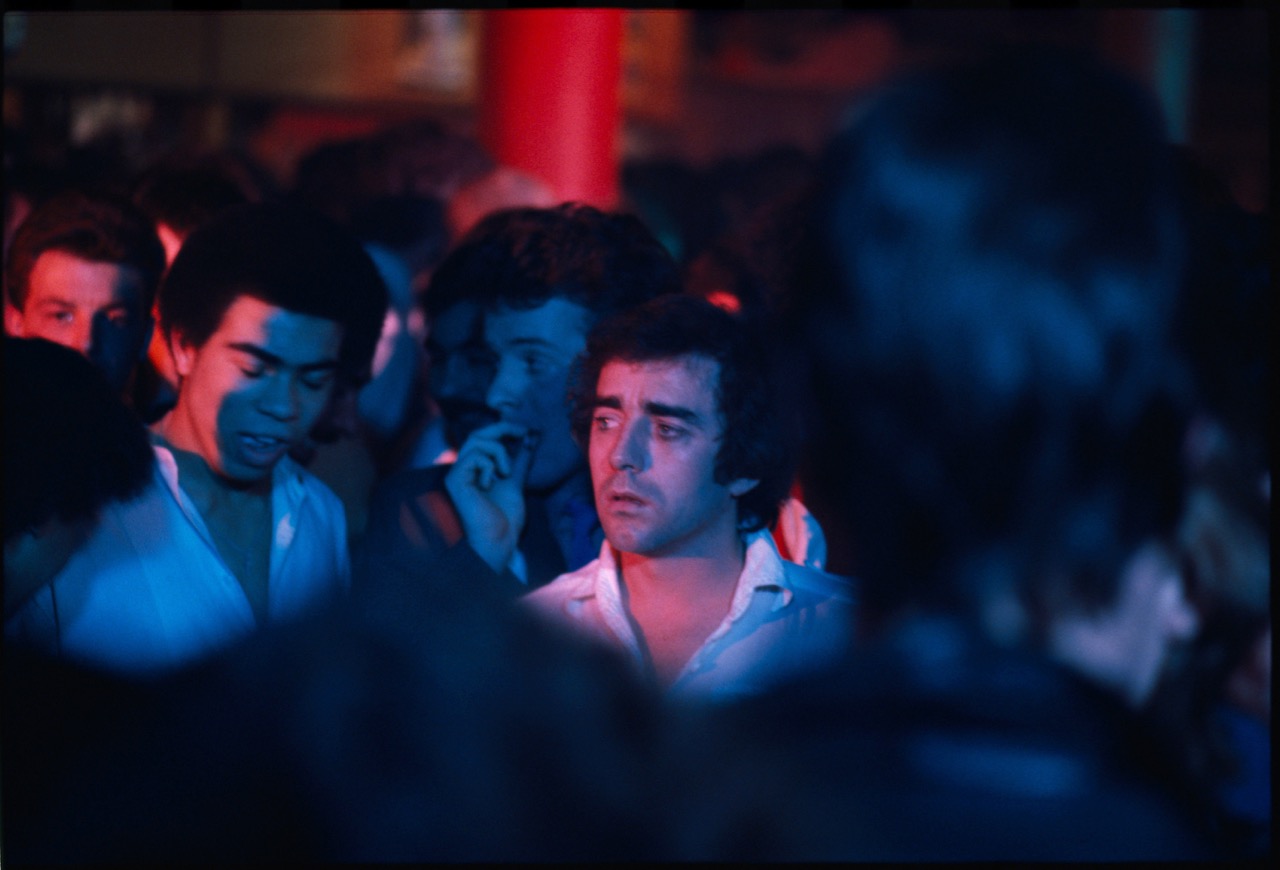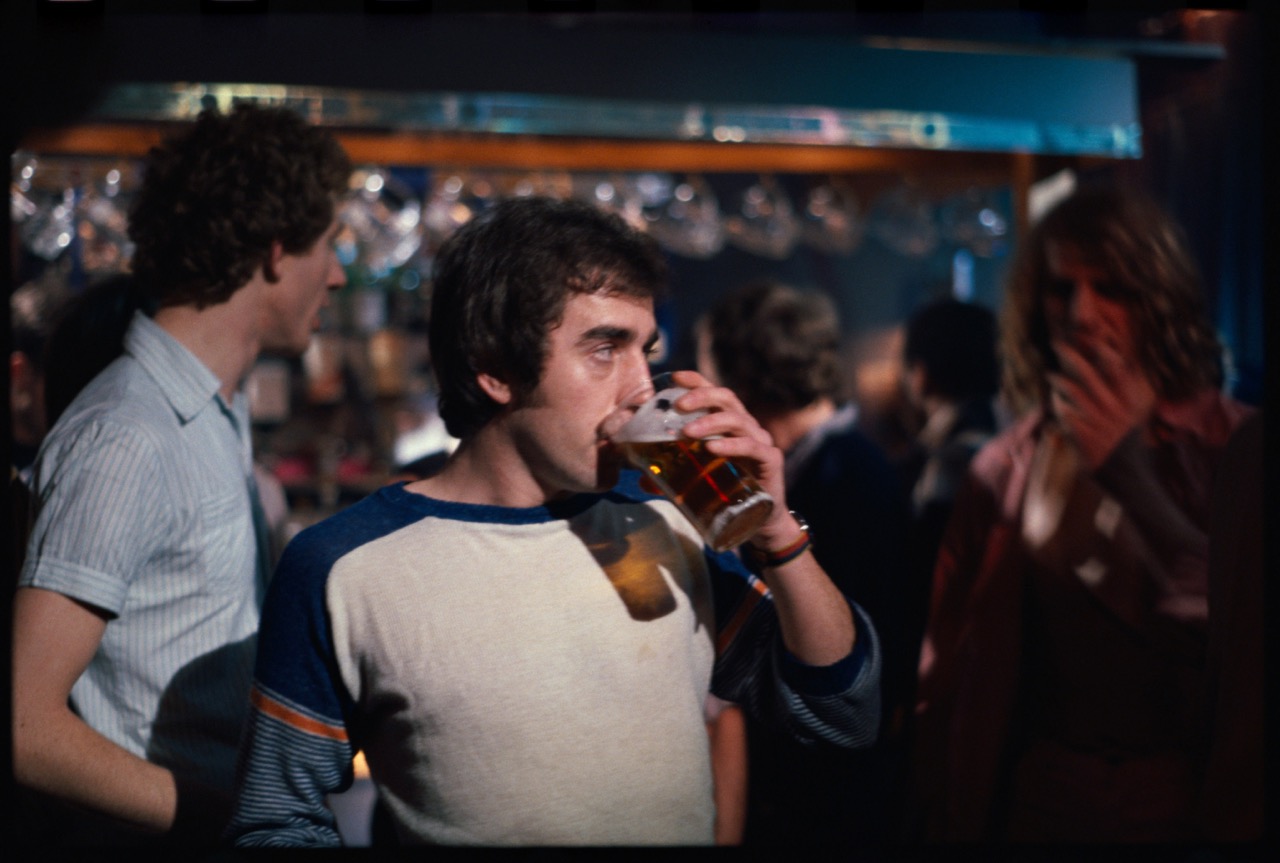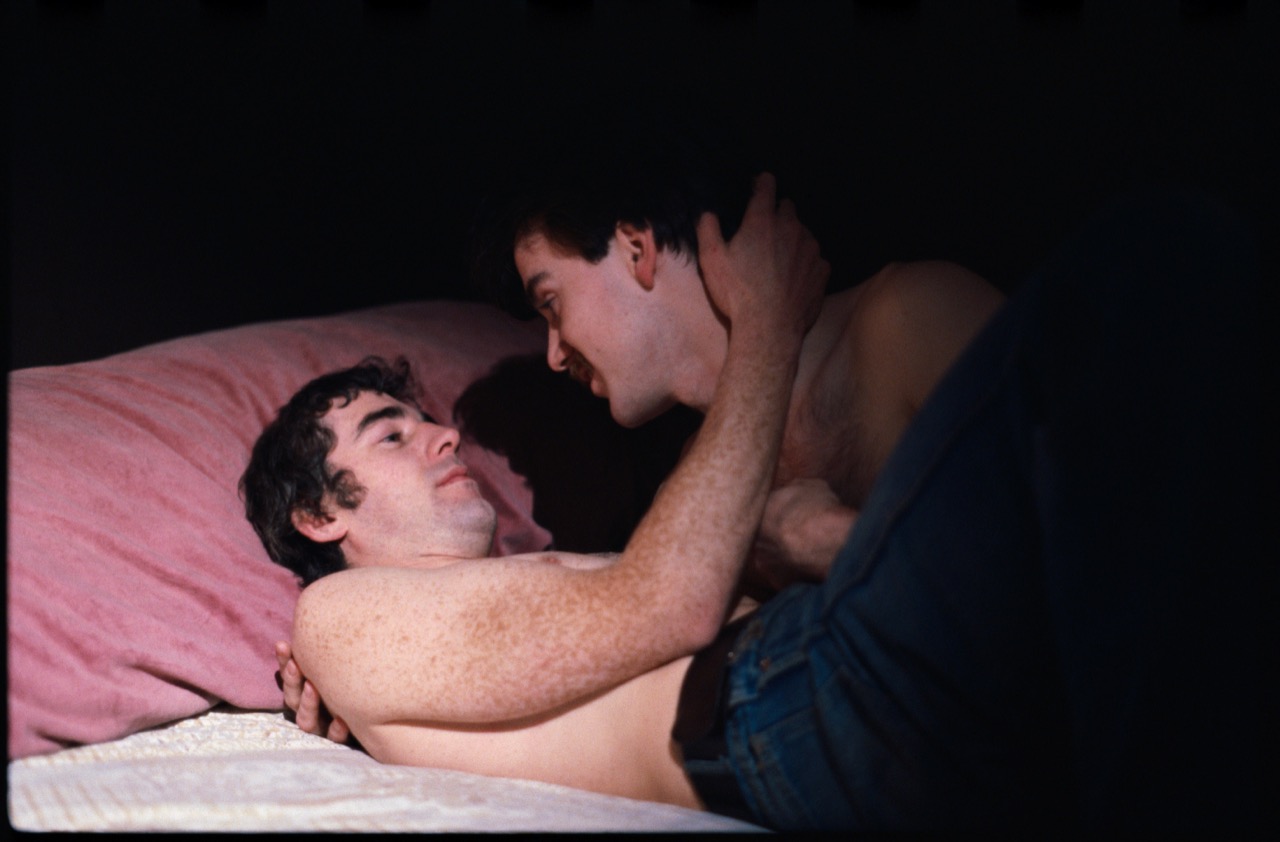 Melissa Anderson
Melissa Anderson
In Ron Peck’s 1978 film, a nuanced look at gay life in London.

Ken Robertson as Jim (center) in Nighthawks. Image courtesy BFI.
Nighthawks, directed by Ron Peck, available to buy or rent on Amazon Prime, released on DVD by the BFI
• • •
Editor’s note: In light of the fact that most movie theaters around the country remain closed during the coronavirus pandemic, we have invited our contributors to revisit films that are particularly significant to them and that are easily found online.
• • •
By the late 1970s, with disco’s dominance, perhaps no place promised more utopian possibility than the dance floor, regardless of where one fell on the Kinsey scale. Implicitly hetero movies capitalized on this belief most successfully with Saturday Night Fever (1977), featuring John Travolta’s Tony Manero as the grapevining prince of Brooklyn’s Bay Ridge. The next year saw the release of Thank God It’s Friday, set in an elysian boogie emporium in Los Angeles, where the euphoria peaks with Donna Summer’s performance of “Last Dance.” A landmark in LGBTQ literature, Andrew Holleran’s Dancer from the Dance (1978) stands as the first great disco novel, vivified with descriptions of gay revelers moving to the rhythm en masse.
Ron Peck’s quietly revolutionary debut feature, Nighthawks, also from 1978, takes a less sanguine view: here the dance floor becomes a space of both lusty liberation and disheartening ritual. Set in London, the film, which Peck cowrote with Paul Hallam, centers on one of cinema’s first fully realized, complex gay protagonists: Jim (Ken Robertson), a semi-out geography instructor at a comprehensive school and a compulsive clubgoer. During the day, we follow Jim, unfailingly polite and patient, as he gives his rambunctious tween and teen students lessons on India and acquaints a new substitute teacher, Judy (Rachel Nicholas James), with the school. After sundown, Jim—growing restless in his tidy, tiny Notting Hill apartment—hits the bars, where he cruises, moves to the beat, and keeps up his end of banal conversations (“Crowded, isn’t it?”).

Ken Robertson as Jim in Nighthawks. Image courtesy BFI.
The camera fully immerses us in Jim’s nocturnal rites, frequently assuming his point of view. (Nighthawks’ cinematographer is Joanna Davis.) In the film’s opening scene, Jim, a lager in one hand and a pack of Marlboro Reds tucked into the waist of his snug jeans, scans the bodies on the main floor of a club, as metallic, synthy disco blares. (Short, compact, and handsome, Robertson bears more than a passing resemblance to Al Pacino, who, two years later, would star in Cruising, a stygian companion to Nighthawks; both movies are crucial artifacts of the pre-AIDS era.) Through Jim’s eyes, we observe the intricate choreography of guys both assessing others and being inspected themselves. Making his way through the gazing scrum, Jim chats up Mike (Tony Westrope), a twink in a sleeveless white tee with wispy, middle-parted hair.
Following a hard cut—a transitionless editing technique used throughout the movie, one that sharply underscores the rote patterns in the schoolteacher’s life—Jim is now in Mike’s cramped flat, kissing him on his bed. Another cut: desultory morning-after conversation. And another: Jim drives Mike to the nearest Tube station, gingerly suggesting a follow-up date. They’ll see each other a few more times, then stop. The cycle repeats with other men: Neal, Peter, an unnamed American banker temporarily stationed in the capital city.

Ken Robertson as Jim and Clive Peters as Peter in Nighthawks. Image courtesy BFI.
“Don’t you get anxious about whether or not you’re ever going to see these people again?” Judy asks Jim after the two have grown close enough that he casually comes out to her during after-work drinks. (Only two other colleagues of Jim’s know that he’s gay.) Nighthawks boldly wrestles with that question, refusing to dismiss it outright while also refraining from presenting Jim’s behavior as aberrant in any way. He candidly discusses the misery he experienced with a recent live-in lover, all the while delicately hinting at the unhappiness that Judy—the mother of two young children and married to a man we never see—endures at home. “I enjoy not having any ties, not knowing who I’m going to meet,” Jim declares. That freedom may occasionally be depleting. But it is freedom nonetheless. Each evening out promises excitement—sometimes realized, sometimes not—in public and private spaces where gay men in England were only beginning to feel a modicum of safety. (Homosexuality was partly decriminalized in the country in 1967.)

Ken Robertson as Jim and Rachel Nicholas James as Judy in Nighthawks. Image courtesy BFI.
And there are ecstatic moments that elevate Jim’s routine nightclubbing. One energetic dancer is filmed for a full minute or two, his limbs in constant motion as he loses himself to the four-on-the-floor rhythm. To a disco ballad, shirtless couples sway in tender embraces. Recalling his first time at a gay club while a still deeply closeted young man, Jim describes the experience to Judy as a kind of deliverance.
Eventually, Jim reconciles his nocturnal self with his diurnal one. In an electric segment near the end of film, one of the instructor’s pupils—a scrawny, snarling adolescent with a Teddy Boy quiff—demands to know: “Is it true you’re a queer?” Jim calmly replies in the affirmative and then answers a host of ensuing questions from his students, wild with curiosity: “Do you carry a handbag?” “Do you dress in women’s clothes?” “What do you do in bed?” “Are you ashamed of it?” “Sir, what does your family think about it?” His responses to these naïve queries evince as much forbearance as that earlier shown to Judy when she voiced her slightly patronizing concern about his dating habits.

Ken Robertson as Jim in Nighthawks. Image courtesy BFI.
Peck was adamant that his nuanced film not be held up as an all-encompassing portrayal of gay codes and customs. As detailed in Vito Russo’s The Celluloid Closet, Peck wrote the following in a program note accompanying Nighthawks: “The film only shows one part of the gay scene. . . . Almost any film starts off with the burden of trying to redress an imbalance, to make homosexuality visible in the cinema. We need hundreds of gay films, not half a dozen.”
We have surpassed, by at least tenfold, that wished-for milestone in the forty-plus years since Peck composed that statement. A filmmaker who contributed an especially vital body of work to queer cinema can be seen briefly in Peck’s movie: Derek Jarman, who would make a feature that serves as an exuberant counterpart to Nighthawks. In 1984, Jarman, excitedly experimenting with a new camcorder, chronicled the action at Benjy’s, a gay club in London’s Mile End district. This ebullient footage, with a small but buoyant crowd shimmying to Frankie Goes to Hollywood, wouldn’t be screened until 2014, under the title Will You Dance with Me? Recorded deep into the dual catastrophes roiling the UK at the time—Margaret Thatcher’s prime ministry and AIDS, the disease that killed Jarman in 1994—the project reminds us that heaven can be found even in hell.
Melissa Anderson is the film editor of 4Columns.